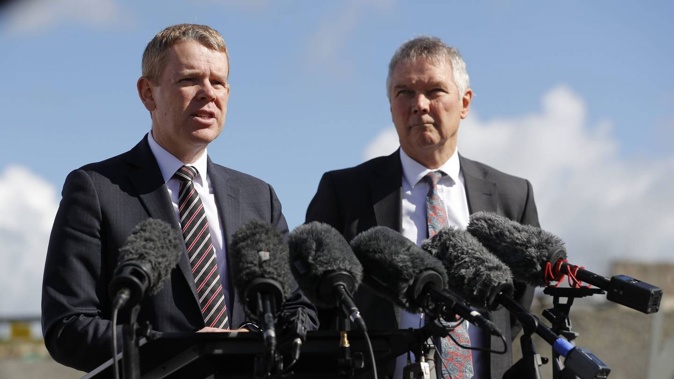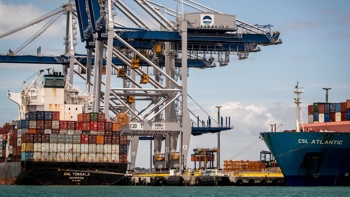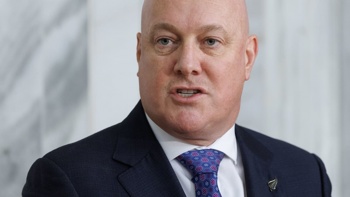
The Government has unveiled a $20b transport budget for the next three years, boosting road maintenance, public transport and cycleway investment.
But the kicker is that fuel taxes are going up for the first time since they were frozen in 2020. They will go up 12 cents a litre over the three-year budget, phasing in with a 2 cent a litre hike in the first half of the first year of the budget, followed by another 2 cent hike in the second half, and four cent hikes in the years after that.
It will take national fuel taxes on Unleaded 91 to about 90 cents a litre - or about $1 in Auckland, thanks to the Auckland Regional Fuel tax.
The changes mean the likely funding of road improvements along SH1 from Cambridge to Piarere, Wellington CBD to the Airport, and the Christchurch Northern link.
It will also fund Napier to Hastings along SH2, the Hope Bypass on SH6 and Tauranga to Tauriko SH29.
These will include four-laning.
Public transport subsidies will be increased by 50 per cent on the last budget (2021-2024), and walking and cycling improvements will be increased by 79 per cent, although from the relatively low base.
As previewed in the Herald, it will also include funding for developing Auckland’s northwestern motorway for buses after the phenomenally successful Northern Busway.
Transport Minister David Parker unveiled the plan in Parliament on Thursday morning. Technically called the Draft Government Policy Statement on Land Transport (GPS), it sets out how much money the Government wants Waka Kotahi, its independent transport agency to spend across different parts of the transport system like public transport or road maintenance.
Once the Draft comes back from consultation and the document is finalised, Waka Kotahi uses the GPS to put together its National Land Transport Plan (NLTP), which actually states where money will get spent.
The plan dictates how much money councils get to help them pay for public transport subsidies to keep fares low, how much money gets invested in maintaining roads, building roads, even policing road safety.
Parker said one of the centrepieces of the plan was road maintenance.
“The main change is that we’ve elevated maintaining and operating the system. We’ve strengthened our focus on the maintenance of assets,” Parker said.
He said National had “flatlined” road maintenance spending when it was last in office in order to focus on building new state highways.
“Maintenance flatlined when, under the National government, they focused on their Roads of National Significance.
“They told [Waka Kotahi] to deliver those first and spend what was left over on maintenance essentially - so the maintenance was flatlined,” Parker said.
/cloudfront-ap-southeast-2.images.arcpublishing.com/nzme/A75BINNZMVAUHO6AMTPLMMYQWQ.jpg)
National transport spokesman Simeon Brown said he would get rid of the plan if in government. Photo / Alex Cairns
National’s transport spokesman Simeon Brown has said his party does not intend to hike fuel taxes if it wins the next election. He said if elected, National would rip up this transport budget and start again.
A significant part of the GPS is signalling to local councils how much the Government plans to spend on transport in their areas.
Councils co-fund things like public transport and the building and maintenance of local roads with Waka Kotahi.
Local road maintenance received one of the smaller funding increases, going up 35 per cent from $2.6b under the 2021 budget to $3.8b under the 2024 budget.
Local road improvements went up 50 per cent from $555m to $835m.
Walking and cycling improvements have gone from $420m to $7250m.
For the first time, interregional public transport will be given funding, although just $105m a year.
The GPS document said this will allow the Government to fund existing interregional rail services like Te Huia and the Capital Connection, as well as explore new ones.
There was scant detail on what comes next for Auckland Light Rail, although the Government has said this will be funded with a separate funding system to be announced later.
The draft GPS said an updated cost estimate, a plan for how the project will be phased, and where it will actually go will be announced after the plan is adopted.
The document also showed the pressure Waka Kotahi is under in terms of funding. The $20.8m package over the next three years is funded through $13.1b of existing revenue and $1.4b of increased fuel taxes.
The remaining $6.3b comes from a $2.4b Crown grant, paid for through general taxation, Emissions Trading Scheme revenue ($500m), speed camera revenue ($500m), and a loan to Waka Kotahi of $3.1b.
This is on top of the $2b loan the Government gave Waka Kotahi for its last transport plan.
Parker said Waka Kotahi would take back control of the state highway parts of Let’s Get Wellington Moving transport programme, driving forward projects that were on the central government-owned state highway network, leaving some of the rest for councils.
He hinted that this might mean the Let’s Get Wellington Moving organisation would get shut down.
Former Transport Minister Michael Wood had been working on his own GPS that would have been announced earlier this year.
That plan was put on hold after outrage at a plan to allow councils to take away car parks and replace them with things like cycleways and public transport at the same time they were maintaining roads - spending road maintenance funding on installing cycleways and public transport.
Parker said that this plan was actually “not much different” to Wood’s plan.
He said that the plan still allowed councils to take away parks and replace them with cycleways and public transport, when they were maintaining roads.
Thomas Coughlan is Deputy Political Editor and covers politics from Parliament. He has worked for the Herald since 2021 and has worked in the press gallery since 2018.
Take your Radio, Podcasts and Music with you









